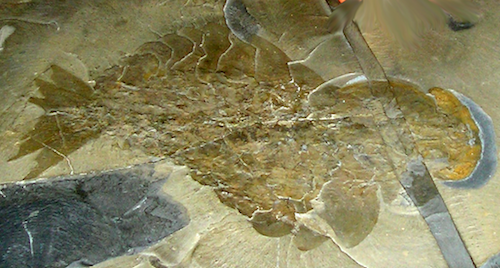 Evolution
Evolution
 Intelligent Design
Intelligent Design
From Biochemist Larry Moran, More Gratuitous Misrepresentations

Biochemist Larry Moran at the University of Toronto has posted another piece arguing with us about the Cambrian explosion, and specifically the view given by Stephen Meyer in his book Darwin’s Doubt. I do wish Moran would state his case without inserting gratuitous misrepresentations. If he’s read the book, he should know by now what intelligent design theorists like Stephen Meyer really think. So all I can conclude is that Moran’s little slurs are an attempt to prejudice his readers.
Here it comes:
Meyer … believes that a supernatural being visited the Earth about 540 million years ago and noticed that it was teeming with life — lots of plants, algae, fungi, protozoa, and bacteria. The god(s) thought there should be some bigger creatures called “animals” so he/she/it/they built a few and let them loose to reproduce and evolve.
Meyer believes no such thing. He thinks that the appearance of most of the animal phyla over 10 million years represents a considerable increase in biological information. Ten million years is nothing on the geologic time scale, and information isn’t had for free. New body plans and new ways of living require new cell types, new organs, new nervous systems — at a minimum, new ways of using existing genes and the acquisition of new ones. This represents an incredible increase in biological information.
The prior existence of algae, fungi, protozoa and bacteria is not disputed by Meyer. (Plants came later, Professor Moran.) The existence of these organisms also needs explanation. For them to exist at all required massive amounts of information. Scientists can’t explain how the first cell, the first molecule of DNA, or the first protein came to be, or where the information to make them came from. Meyer thinks that DNA, RNA, and proteins require explanation first of all, which Moran should know from reading either Signature in the Cell or Darwin’s Doubt.
More Moran:
Most biologists don’t agree with Meyer’s explanation (surprise!). Instead, they look for real evidence to inform them of what happened at this point in the history of life. One of the ways they do this is to construct phylogenetic trees from sequence data. This should be a test of whether all these species popped into existence at once or whether they have an evolutionary history.
Molecular phylogenies should also reveal whether the various phyla are related to each other or whether they were all poofed into existence independently within a few days, or weeks, or years, as Stephen Meyer suggests.
Really, Larry? You were doing so well! I thought maybe we could have a legitimate discussion of the science. Then poof, more misrepresentations appear.
I have already said Meyer does not think that all these animals poofed into existence over the span of days, weeks or years. He acknowledges the existence of the fossil record and the time span of ten million years over which animal life made its appearance. He does dispute the accuracy of the trees, however, for reasons Moran describes quite well in his post. The molecular clocks are equivocal about both the timing of the event and the relationships between groups. And the fossils are still missing.
To be fair, Moran acknowledges that Meyer may actually have some points worth discussing. (Why not discuss them, Larry?) Where Moran and Meyer part ways is on how to account for the appearance of these animals.
Perhaps the major animal phyla evolved from earlier species. Plenty of ID advocates accept that. And we all accept evolution in the sense of change over time. What we dispute is the mechanism responsible for change over time.
Meyer disagrees with the interpretation that is placed upon the Cambrian by Moran and other evolutionary biologists, primarily because they fail to account for the sudden appearance (10 million years) of so much biological information. They assume that a purely materialistic evolution is capable of accounting for all that biological information. The problem is, it does no good to push the origins of animal life further and further back in time, because the information problem hasn’t been answered. Meyer states very clearly that the information to make animals, whether from prior organisms or not, came from an intelligent designer. Why? Because intelligence is the one source we know that is capable of generating that kind of information.
If Moran could just leave out the misrepresentations, perhaps we could have a legitimate discussion about the evidence. But why try when your opponent can’t stick to the facts?
Image: Anomalocaris, by Keith Schengili-Roberts (Own Work (photo)) [GFDL, CC-BY-SA-3.0 or CC BY-SA 2.5-2.0-1.0], via Wikimedia Commons.
